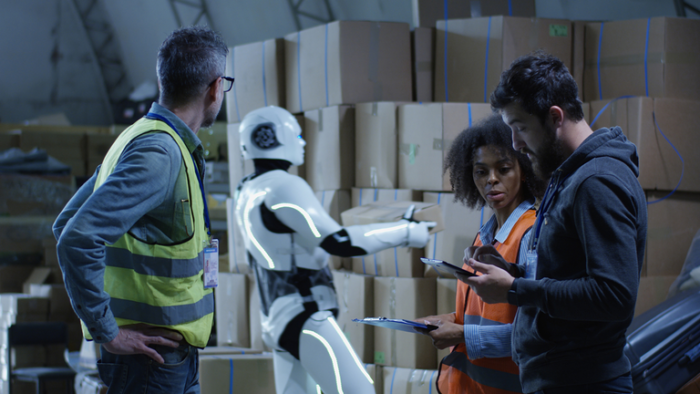Robots can improve the fulfillment process by eliminating labor that is redundant, physically taxing and non-value-added, and by doing it faster and more efficiently.
The increase in e-commerce is putting extra pressure on supply chains already strained to the max and open up possibilities for usage of intelligent robots
By Jordan K. Speer for Industry Week
photo: Evgeniy Shkolenko | Dreamstime
The coronavirus has dealt a stunning blow to supply chains, logistics and fulfillment, shutting businesses and economies down and revealing many of the vulnerabilities they contain. Like other epidemics and pandemics, but unlike most other disasters we commonly encounter (earthquakes, floods, tsunamis, fires, political unrest) that involve physical destruction of buildings and infrastructure, COVID-19 has wreaked havoc on supply chains because it has knocked people out of the game. Factories, warehouses, fulfillment centers, vehicles and roads are not under water or caved in on themselves. They are withstanding COVID-19 just fine.
Meanwhile, hundreds of thousands of people are falling ill globally, social distancing is the rule of the day and most non-essential businesses are temporarily (or permanently) closing their doors. Not surprisingly, consumers, sheltering in place, have quickly ramped up their online shopping. According to a consumer survey conducted by IDC from March 23-31, online shopping is up by 47%, with 35.4% expecting to spend more on retail, whether in store or online, because of COVID-19 concerns. Moreover, fears of scarcity as well as the ability to acquire goods are likely what’s behind a significant increase in bulk buying that goes well beyond toilet paper. Overall, 55.8% of consumers are loading up or expect to load up on bulk quantities of goods. The increase in e-commerce is putting extra pressure on supply chains already strained to the max, requiring as it does more individual picking, packing and shipping of goods, and increased last-mile delivery.
As business executives begin to map out immediate, near- and long-term strategies to improve fulfillment, many of them are looking to increase automation and usage of intelligent robots in warehouses and DCs. This will eliminate some of the risk of slowdowns or shutdowns that arise when workforces are partly or entirely knocked out of the picture.



